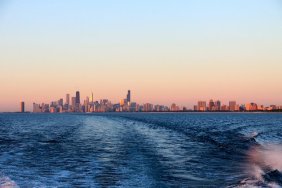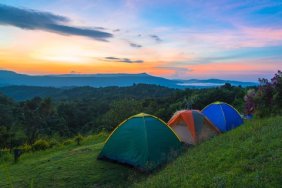 Last week, we took a look at the three basic categories that outdoorsmen fall into when it comes to packing. There are those who pack too much, those who pack as little as possible, and then those who fall somewhere in between. Today, we’ll explore some ways that those who tend to leave their backpack bursting at the seams can shed some pounds and save space.
Last week, we took a look at the three basic categories that outdoorsmen fall into when it comes to packing. There are those who pack too much, those who pack as little as possible, and then those who fall somewhere in between. Today, we’ll explore some ways that those who tend to leave their backpack bursting at the seams can shed some pounds and save space.
Perhaps the biggest space hog in your pack will be your clothing. Many people just don’t stop to ask themselves, “Do I need all these clothes?” Here are the generous essentials: two shirts, three pairs of socks, one pair of pants, one pair of shorts, a fleece vest, a jacket, and a hat. These items should be all that the average camper needs for a two or three-day trip. Heck, you can save more space by sporting a pair of convertible pants.
One thing people often overlook is the multi-functional versatility of some of the items we bring with us on the trail. For instance, use your sleeping pad as extra seating, use a piece of clothing as a pillow by rolling it up or putting it in your sleeping bag’s stuff sack, or use a metal mug for both eating and drinking instead of bringing a ton of dishes.
Compression sacks are great space-savers, but I’m surprised at how many people don’t invest in them. Any empty space in your pack is wasted space (your pack is too big if you consistently have a lot of empty space), and compression sacks can allow you to fit more into the same amount of space. Clothes-horses can stuff clothing into one and bring a few more garments on a trip, for example.
Carrying extra batteries for electronics adds weight, but you’ll need them for lanterns, GPS units, and other devices. To make sure you’re maximizing the necessary weight, get the best batteries you can find and test them with a battery tester before heading out. If you’re not using a lot of battery-required devices, go with candle lanterns, as candles weigh less.
When it comes to food and water, it’s really about being smart and planning ahead, since you really can’t skimp on your basic needs. Eat your heaviest foods first, like canned goods, for example. Doing so will lighten your load, which is a bonus on multi-day trips. It’s smart to go with products from Backpacker’s Pantry, which tend to store easily, are lightweight, and require only boiled water to prepare. Also, creating a meal plan ahead of time will help you avoid packing too much food. Where water is concerned, it’s smart to plan ahead for finding water sources along your route so you don’t have to carry too much water. However, don’t underestimate the amount water you’ll need. Dehydration sets in quickly. Bring a filter, but I’d also make sure to have a backup source of water purification on hand, such as iodine tablets, just in case your filter fails.
Always go with travel size toiletries, like toothpaste, deodorant, toothbrush, etc. It saves a ton of space, trust me. Also, wrap other useful items such as duct tape or thread around the handles of toothbrushes or pens instead of bringing a roll.
As you can see, there are several ways to obtain maximum utilization of pack space and shed some unnecessary pounds on the trail. Doing some research online for ideas, asking around, and thinking outside the box when you look at each piece of gear will help lighten your load and conserve space for the vital items.








